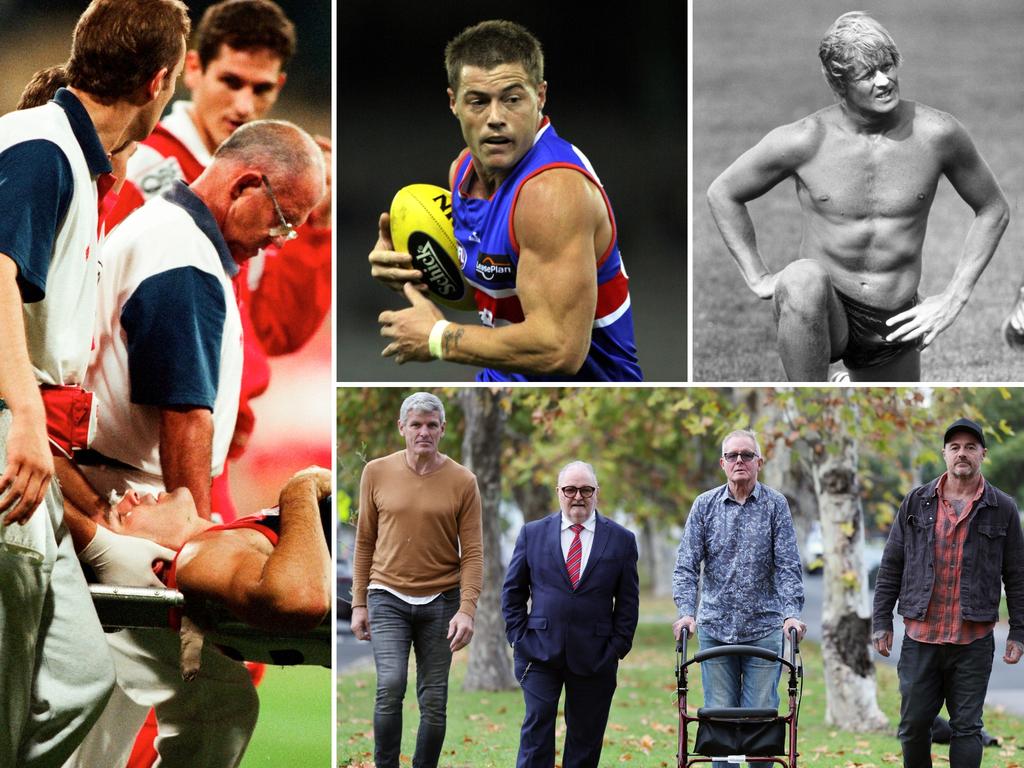The AFL’s lawyers last week made an application in the Supreme Court of Victoria to “declass” the class action against the league, which has dragged on in court for the past three years.
While the AFL has set its sights on having one million registered participants by 2033, fuelled by $1bn of investment in game development and community football, league officials are clearly aware that the plight of a group broken footballers, chasing compensation in the court, claiming the game left them brain damaged, does little for marketing it to the next generation.
But it’s getting harder and harder for the AFL to gloss over the dangers of playing the sport.
The brain disease chronic traumatic encephalopathy has been found post-mortem in the brains of former VFL and AFL players including Geelong great Polly Farmer, St Kilda star Danny Frawley and Richmond’s Shane Tuck.

While participation numbers for women and girls are booming, the safety of the game for women, particularly around brain health, is a major concern for anyone who dares to dig into the impact the high-tackling, heavy-contact code can have on a female player.
Four female footballers’ deaths have been linked to the game – Heather Anderson, who took her own life at 28, was found to have CTE post-mortem.
Maggie Varcoe, 27, the sister of AFL footballer Travis, died after a head clash with one of her teammates during the Adelaide Football League grand final in 2018.
Former Giants player Jacinda Barclay, who took her life at 29, was found to have neurological damage, although not CTE, with the Australian Sports Brain Bank describing her brain as a “ticking time bomb”.
In 2022, Elisabeth Memos, 23, had a stroke that was linked to a community match she played four weeks earlier, when she was accidentally kicked in the head and concussed.
Prestigious Sydney school Queenwood, which produced Giants star Nicola Barr, banned Australian rules football several years ago after deeming the sport carried too many risks to young girls’ brain health.
A University of South Australia study last year found female Australian football has more tackles per minute of match play than male Australian football, revealing that ACL knee injuries and concussion are the most commonly sustained injuries by amateur female players.
UniSA’s Dr Hunter Bennett, an exercise and sport science researcher, said the study showed there should “be a focus on neck muscle training to reduce the incidence of whiplash concussion”.
At the elite level one study suggested AFLW players are twice as likely as their male counterparts to get concussed.

Then there are those long-retired players who claim they are suffering because of the brain damage they allege they sustained during their careers. Their families are left bereft as they try to support their impaired loved ones, at great mental and financial cost.
Sue Rudolph, long-time partner of former Western Bulldog Nigel Kellett, who stopped working because of his brain injury in 2021, has been searching for more support from the AFL. Kellett, 55, has planned and attempted at least six suicides in recent years, being hospitalised and institutionalised in secure facilities along the way.
Ms Rudolph managed to get a meeting with AFL powerbrokers last year to try to seek more of a compensation payout. “In the June 2024 meeting at AFL House we were told, ‘unfortunately, it’s not like we have millions of dollars’ – but they do, with over $1bn in revenue just last year,” she said.
“It’s where they choose to spend those dollars, and they are choosing not to spend it on these past players who are suffering.”







The AFL, the billion-dollar sports code, wants nothing more than a class action by a group of brain-injured footballers to go away.